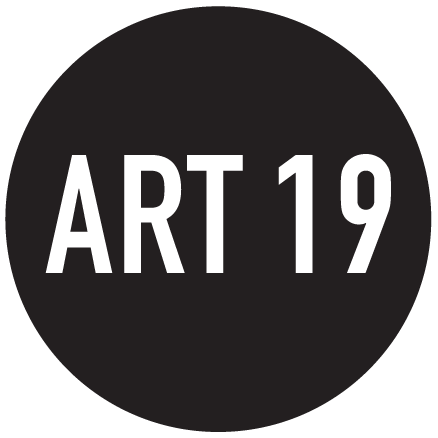Artforum: William Kentridge UNIVERSITY OF WYOMING ART MUSEUM
William Kentridge, Nine Trees, 2012, linocut on pages from Shorter Oxford English Dictionary, overall 42 1⁄2 × 33".
William Kentridge
UNIVERSITY OF WYOMING ART MUSEUM
“Universal Archive” is a haunted show in which absence makes itself felt as presence. Even the artist is a kind of ghost. William Kentridge, with pitch-black ink, obsessively painted repeated variations of specific objects on pages of the Encyclopedia Britannica and the Shorter Oxford English Dictionary. He used a “good brush,” whose point held its shape and could create fine detail, as well as a “bad brush” that left behind the calligraphic wisps of a comet’s tail. Yet the images in this exhibition aren’t the originals but are exactingly made linocut prints that unerringly trace the artist’s hand. The forms range from delicate loose points transforming into tree leaves to a thick gestural line that, like certain Zen paintings, seems to capture the essence of the thing, such as a cat’s wary step, in the simplest of strokes. Kentridge is here and not here in the work. A paradox, a condition of seeming to be but not being, as in the weird space of the self in a dream—or the strangeness of thought—courses disquietingly through his art, asking sphinxlike its riddle.
This enigma, in part, is the casual relation each of Kentridge’s images—typewriter, tree, bird, coffeepot, cat—bear to one another. One senses in the obsessive tangle the complex knot of a particularly sensitive existence: The typewriter uses paper made from the tree; the tree is where the bird perches and sings; the typewriter, songlike, is meant to be used to write down thoughts, expressions, poems, or letters; the coffeepot accompanies the work of composition; the cat prowls quietly through the house. Everything needed for a kind of life is there, except the one living it.
But the riddle deepens. Whereas the first visual representations made by humans—bison, bird-headed shamans—were found on cave walls, Kentridge offers us a different vision. His iconography is most often rendered on pages of the SOED. That dictionary is so valued in part because it traces a given word’s usage through time, so that reading a definition returns us to some primary spark of living consciousness, the myth of original utterance. The dictionary is a compendium, all that could possibly be said, but isn’t personal, isn’t a life, has no song. It is against this linguistic cave wall that the dreamlike repetitions of Kentridge’s art continually appear, and one comes to perceive an unexpected gap that suddenly yawns as wide as a canyon, an epistemological abyss between how we know, what we see, and who we are—the very void in which the artist resides or hides.
The dominant image throughout this show is the tree. Sometimes it appears as a lone figure on a single page, its species unidentifiable. Sometimes it’s one tree painted over many pages, puzzled and pinned together. The repetitions aren’t only dreamlike, they mimic memory, feel deep in the mind and then deeper than the mind, symbols whose insistent reappearances take on mythic complexity and become Edenic: the tree of the knowledge of good and evil, painted by good and bad brushes. Two of the drawings in this presentation feature only words. One asks, ANYTHING TO SAY? The other exclaims, YOU HAVE BROUGHT THIS ON YOURSELF! They are statements from the judging, mocking parent—the mother with her hand on her hip, an image into which one version of the coffeepot eerily transforms. On other trees other words appear. One is filled with maxims, both hollow and haunted: AT THE CRITICAL POINT IT IS USELESS TO SOB; A NICELY BUILT CITY NEVER RESISTS DESTRUCTION; NEWS OF DEATH IS NEVER UNTRUE; THE SHRAPNEL IN THE WOOD. Horror is present and heavy. Words are no balm, just a reminder of a guilt that has no name. Like the scolded child, we have nothing to say for ourselves—only the empty, complex feeling of complicity into which we disappear. To wake from such troubled dreams we must, Kentridge seems to suggest, learn to accomplish the impossible advice painted on another tree:
UNDO / UNSAY / UNREMEMBER / UNHAPPEN.
— Dan Beachy-Quick
This article was published on www.artforum.com.

